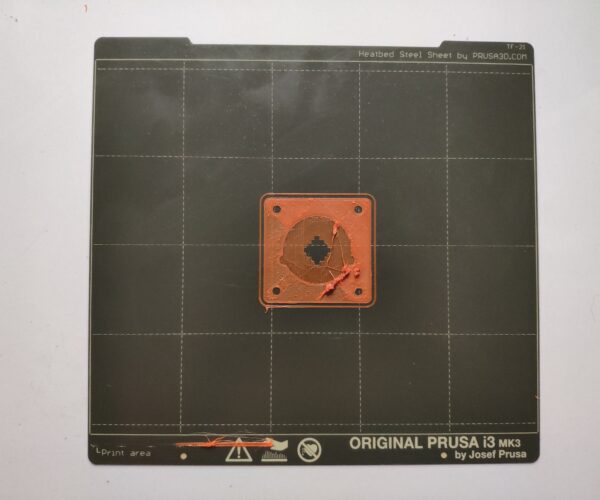Printing problems. Filament Clumps.
[Prusa MK3S. PET-G filament]
Hello!
I own the printer for over a year and have never had a problem. But a week ago, sometimes, pasty areas (clumps) are printed as in the image.
I have totally recalibrated the printer. I have changed the nozzle. I have reinstalled Slicer. I have tried printing with supports or without supports.
Also, it is very difficult to remove the support, if I use it.
I need your help.
Does anyone know what is happening?
RE: Printing problems. Filament Clumps.
Try,
First layer to be 100%(yours look good to me)
Clean bed with dish soap only.
Lower temperature for nozzle.
I had with petg during the print, little blobs on print, i did a lower temperature and a little less extrusion multiplier.
RE: Printing problems. Filament Clumps.
That looks like your Live-Z is too low and the nozzle is scraping up filament on your 1st layer. PETG requires a bit less squish (a less negative Live-Z value) than PLA. Recommendations are to raise your Live-Z (make it less negative) by 0.02-0.2mm when switching to PETG.
and miscellaneous other tech projects
He is intelligent, but not experienced. His pattern indicates two dimensional thinking. -- Spock in Star Trek: The Wrath of Khan
RE: Printing problems. Filament Clumps.
Thank you very much to both 😊
I will study all your recommendations, and apply them. In a few days I will write here, the results.
RE: Printing problems. Filament Clumps.
I use Prusa's temperature settings for PETG 240 / 85º Celsius (464 / 185ºF). Then I'll lower the temperature a bit. The Z axis setting is -1,400. I'll do tests. And I'll clean the bed with soap.
RE: Printing problems. Filament Clumps.
To me it looks like you are using the smooth PEI steel sheet - if so, it is important that you use a release agent like windows cleaner before every print to avoid the PETG part to get stuck on the build plate.
If it is the textured steel sheet, no release agent is necessary, just a clean surface.
PETG really likes to stick to the brass nozzle so I always clean the outside of the nozzle before every print to prevent build up.
A nickel plated nozzle from E3D or MicroSwiss helps with keeping the nozzle clean. All my printers now have plated nozzles (they are a direct replacement of the original nozzles).
Have a look at my models on Printables.com 😉
RE: Printing problems. Filament Clumps.
Hello,
Thanks for your tips.
I just purchased two Micro-Swiss High Speed Hardened Steel Nozzles for E3D V5-V6, nickel plated for Prusa MK3S, from Germany.
RE: Printing problems. Filament Clumps.
@kilawo
Nozzles made of steel (hardened) is not as heat conductive as brass or copper. You may need to print with higher temperature (+5 -> 10 C) to avoid de-lamination when printing PETG or other higher temperature filaments.
The plated nozzles I use from Micro Swiss has a brass/copper core that conduct heat like the nozzles from Prusa. The plating is much harder than brass and will resist wear and still give a low friction surface.
The HSS steel, ruby and carbide nozzles are for more abrasive filaments like carbon/glass fiber and glow in the dark Filaments - they may need the standard profiles to be adjusted to give the best print result.
Have a look at my models on Printables.com 😉
